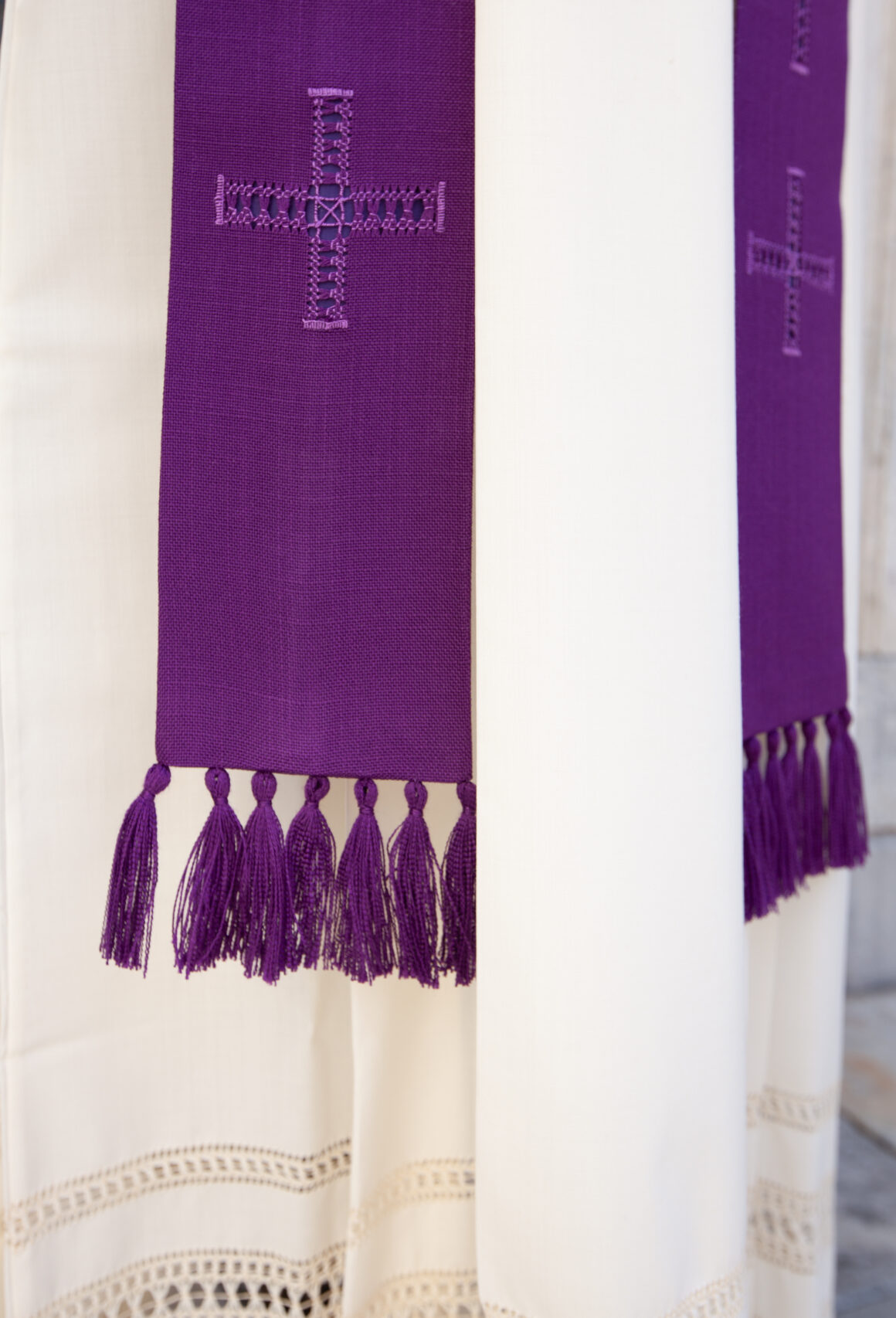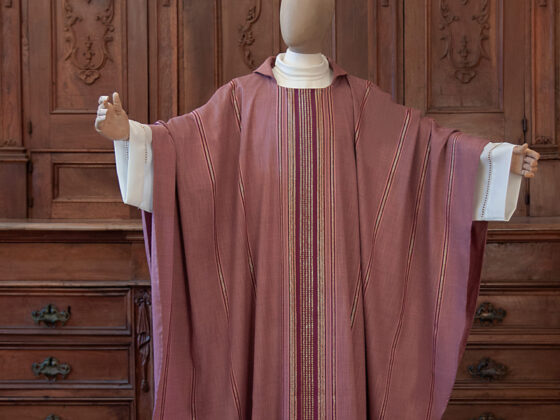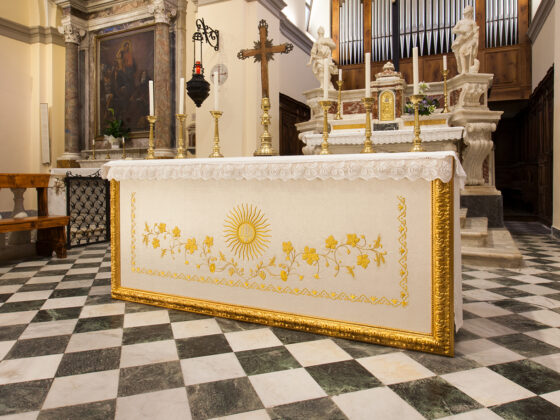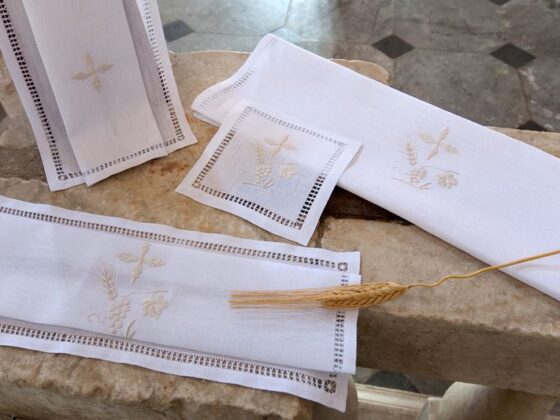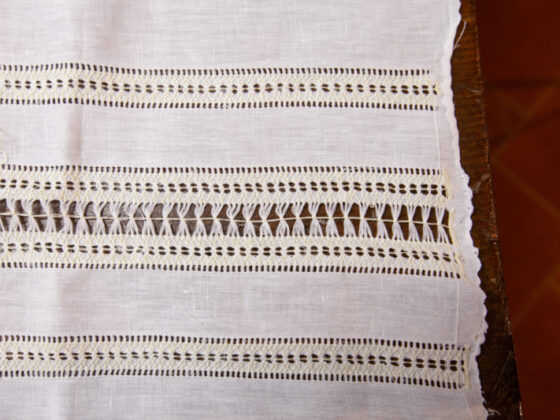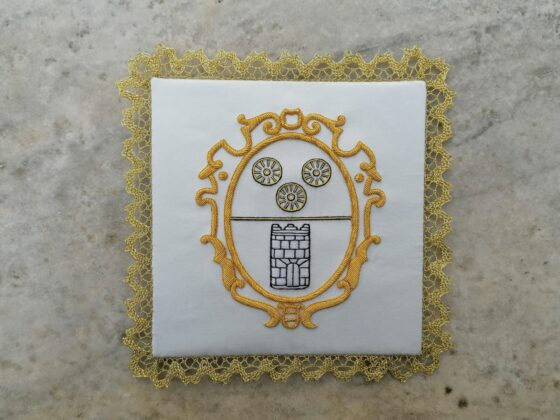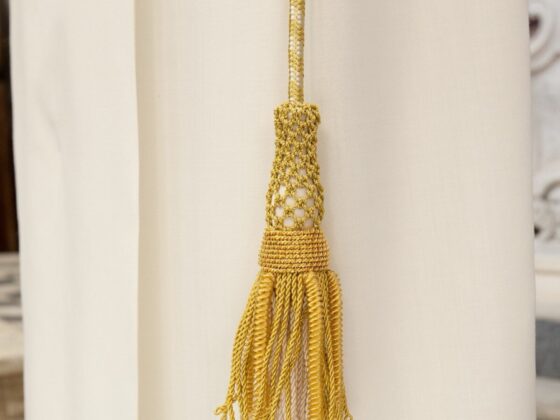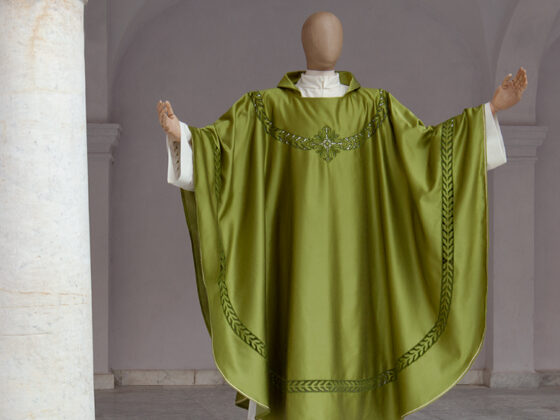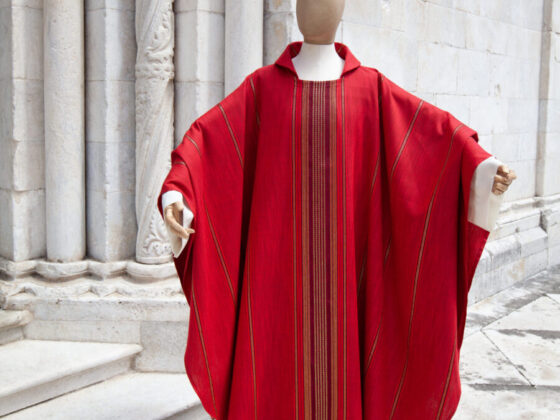The stole is often referred to as the garment that identifies the priesthood. It is a strip of cloth that hangs from the shoulders of the celebrant, sometimes hidden by the chasuble, but always present in every ritual. Let’s explore its history and meaning.
What is the origin of the stole?
The original name of the stole is orarium. There are several theories about the etymology of orarium. Some scholars believe it comes from os (Latin for “mouth”) and indicates a cloth used to wipe the mouth or face, like a handkerchief for sweat. This word is mostly found in the writings of Christian authors, where it sometimes refers to a cloth for the throat. Other scholars trace the root of the word to the verb orare (Latin for “to speak, pray, preach”). Rabanus Maurus (780-856) saw a close connection between the stole and preaching, almost as if it were the garment that should most remind the priest of his mission, guiding his words.
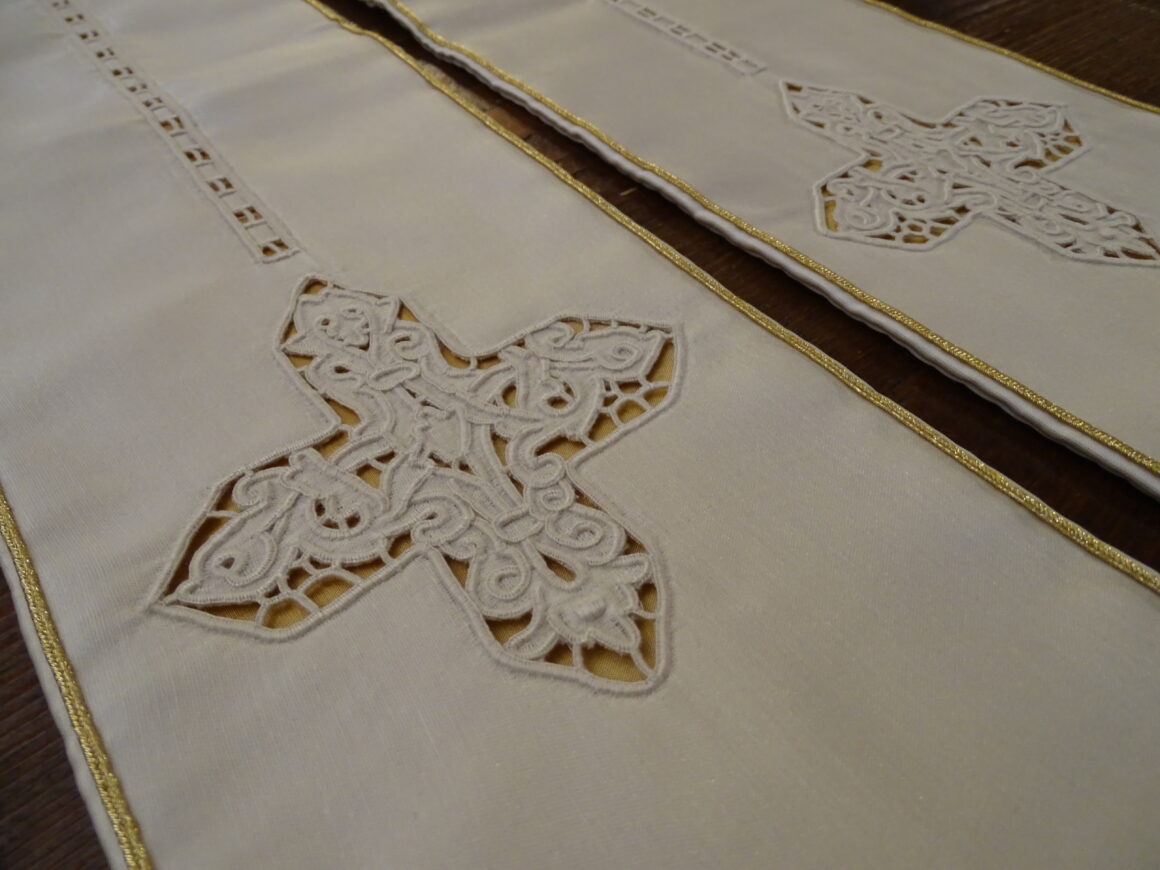
It is in the East that the word orarium first appears with reference to the diaconal stole. In the West, it is mentioned during the Synod of Braga (536 AD) as a vestment used to distinguish the diaconate from the acolytate. The name “stola” (from the Greek stolé, meaning “garment worn over the shoulders”) instead of orarium was presumably first used in Gaul. It is here that we find the earliest traces of this name. By the 10th century, the word stola spread to Italy, and by the 1200s, it was already rare to hear of orarium. It was with the Synod of Toledo (633 AD) that the stole appeared as a vestment for priests and bishops, already during the ordination ritual. During this same synod, distinctions were made between diaconal stoles, which could not have any gold decoration or color, and priestly stoles, which were worn crossed over the chest.
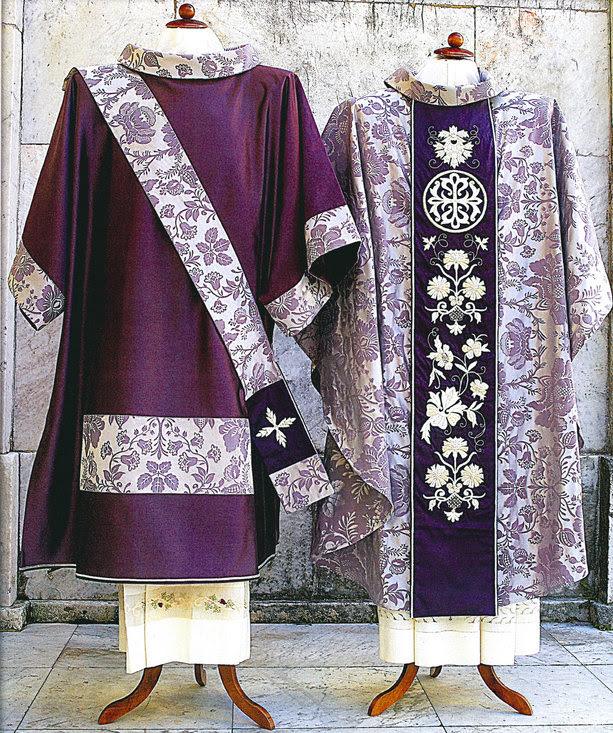
In Rome, it is interesting to note how the stole appears relatively late in written records. This does not mean it was not already used as a vestment; in fact, it is certain that the stole was worn not only by deacons and priests but also by clerics. It is only around the year 1000 that the stole becomes a vestment exclusively used by the higher orders of the clergy, in the same way throughout the West.
It is in this century that the liturgical importance of the stole is emphasized. One example is St. Bruno of Segni (1045–1123), who writes that to celebrate baptisms, confirmations, or other functions, a priest can forgo all other vestments, except for the stole.
The diaconal stole and the priestly stole
The Roman Missal indicates that the stole is an obligatory vestment for both priests and deacons during Mass (338, 340).
Both ordination rites reserve a special moment for the stole and the vesting of the vestments. During the ordination of a deacon, the bishop would traditionally recite this invocation: “Receive from the hand of God this white stole; fulfill your ministry; God is almighty, He will increase His grace in you.” The deacon then wears the stole, and he does so diagonally, letting it fall from the shoulder down to the hip.
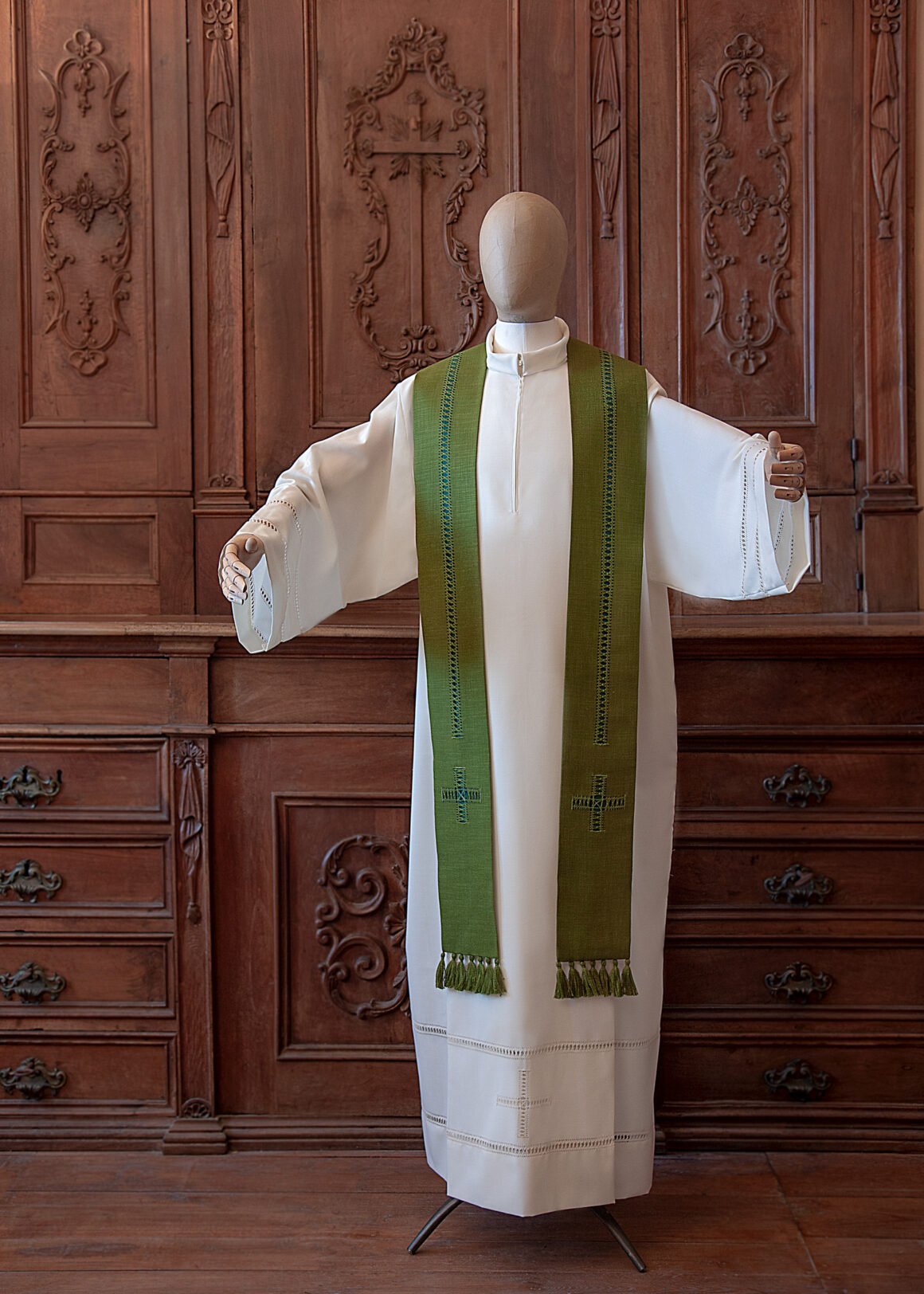
The different way of wearing the stole today seems to have originated from the habit that deacons had of wearing this vestment over the left shoulder. In the East, where the stole, originally called the “Orarium,” was already mentioned in the canons of the Council of Laodicea (364 A.D.), this vestment quickly became a distinctive sign for the service of deacons. In a text by Isidore of Pelusium (+440), it is written that the stole “with which deacons perform their service in the sacred ministries, reminds them of the humility of the Lord when He washed and dried the feet of His disciples.”
As for the rite of priestly ordination, a presbyter assists the ordinand in putting on the stole and the chasuble. The stole is no longer worn diagonally but with the two strips falling parallel in front. During the rite, the bishop recited: “Receive the yoke of the Lord: His yoke is sweet, and His burden is light.”
What does the stole symbolise in the liturgy?
Already for medieval liturgists, the stole symbolized the office that deacons and priests accepted during ordination. From this basic symbolism, many interpretations of the stole developed, mainly related to the virtues of the priest, making it a symbol of humility, wisdom, patience, purity, and fortitude. The fact that the stole, worn over the alb, was fastened at the waist with a cincture signified, for some scholars of the time, that these virtues only had meaning if they were linked to self-control and thus to the mastery over temptations.
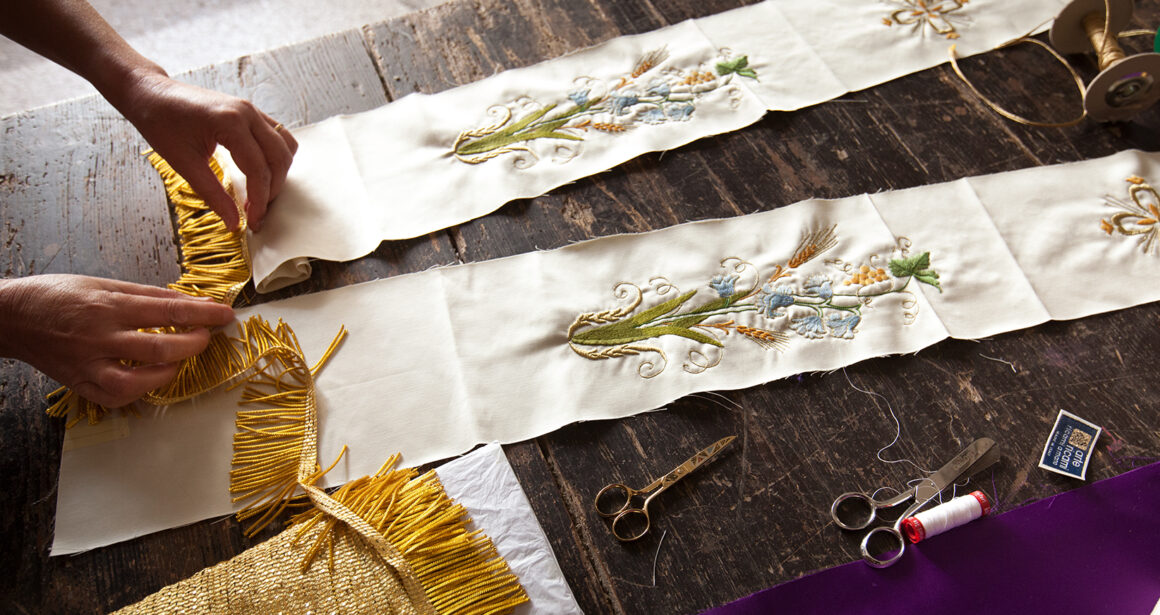
What is the meaning of the prayer of vesting of the stole?
Even for medieval liturgists, the stole symbolized the office that deacons and priests accepted during ordination. From this basic symbolism, many interpretations of the stole developed, especially those related to the virtues of the priest, making it a symbol of humility, wisdom, patience, purity, and fortitude. The fact that the stole, worn over the alb, was tied around the waist with a cincture meant, for some scholars of the time, that these virtues only had meaning if they were linked to self-control and, therefore, mastery over temptations.
What features does a stole have and where to buy it?
Even for medieval liturgists, the stole symbolized the office that deacons and priests accepted during ordination. From this basic symbolism, many interpretations of the stole developed, particularly related to the virtues of the priest, making it a symbol of humility, wisdom, patience, purity, and fortitude. The fact that the stole, worn over the alb, was tied around the waist with a cincture meant, for some scholars of the time, that these virtues only made sense if linked to self-discipline and, therefore, control over temptations.
Bibliographic sources:
Braun, Joseph (1912): Handbuch der Paramentik; Freiburg i. Br.
Kunzler Michael (1996): La liturgia della Chiesa; Editoriale Jaka Book Spa; Milan.
General order of the Roman Missal,http://www.vatican.va/roman_curia/congregations/ccdds/documents/rc_con_ccdds_doc_20030317_ordinamento-messale_it.html. 01/02/2020
Emanuele Borserini, Heaven on Earth. Spunti di catechesi liturgica nella Messa, D’Ettoris Editori, Crotone 2018
Follow us on Facebook e su Instagram to stay informed about news from Arte Ricami.
